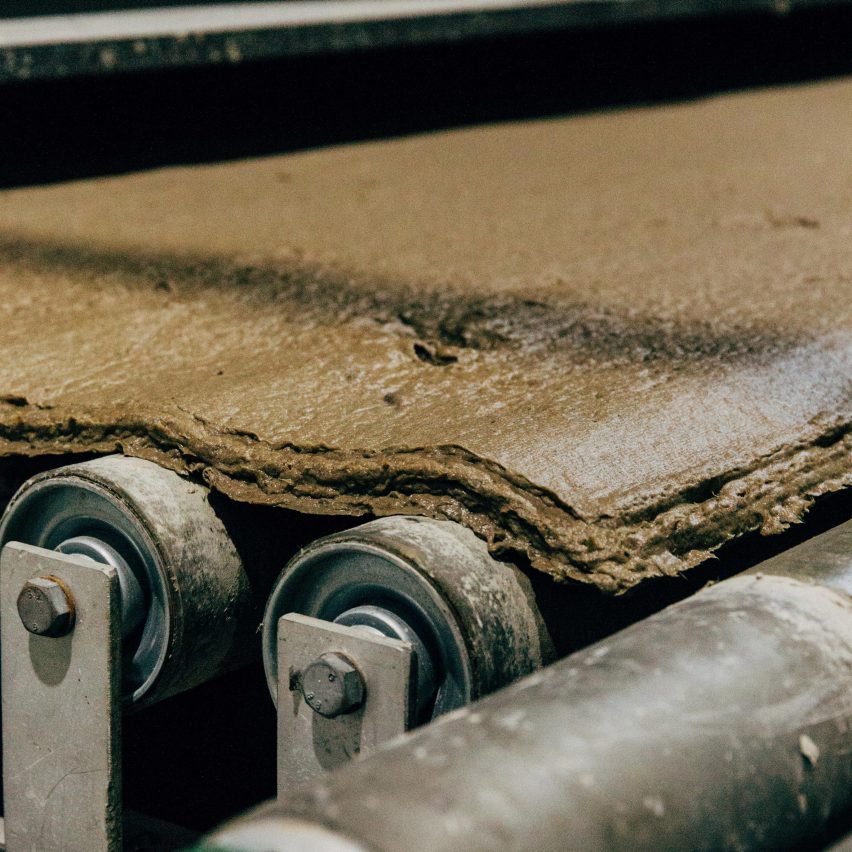Honext develops recyclable construction material made of cellulose fibres from waste paper

Barcelona-based startup Honext has developed a sustainable construction board material made from a combination of enzymes and cellulose taken from the waste streams of paper production.
The material is made from what Honext describes as an "untapped resource": cellulose residue taken from cardboard and paper waste generated at paper mills.
This paper has already gone through several reuse cycles, meaning that the remaining cellulose fibres are too short to be bound together in order for it to be made into paper again.
Honext's material is made of enzymes and cellulose taken from paper production
As a result, these fibres would typically end up in landfill or be burnt ? a process that creates an estimated seven million tons waste globally each year. Honext, however, saves this material from becoming waste by turning it into construction boards for interior partitioning or cladding.
The company mixes together waste cellulose fibres with water and enzymes ? depending on the quality of the waste, a mixture of 50 to 75 per cent paper sludge and 25 to 50 per cent cardboard waste is used.
By adding certain enzymes during the production process, Honext creates stronger bindings between the short cellulose fibres without having to use non-recyclable resins.
This enzymatic treatment is key to the process, as fibres of this length ? less than five millimetres ? can't usually be held together without resins or other gluing additives for use in the construction industry.
The c...
| -------------------------------- |
| New York's Plastic Bag Store stocks groceries made from single-use bags |
|
|
Villa M by Pierattelli Architetture Modernizes 1950s Florence Estate
31-10-2024 07:22 - (
Architecture )
Kent Avenue Penthouse Merges Industrial and Minimalist Styles
31-10-2024 07:22 - (
Architecture )






